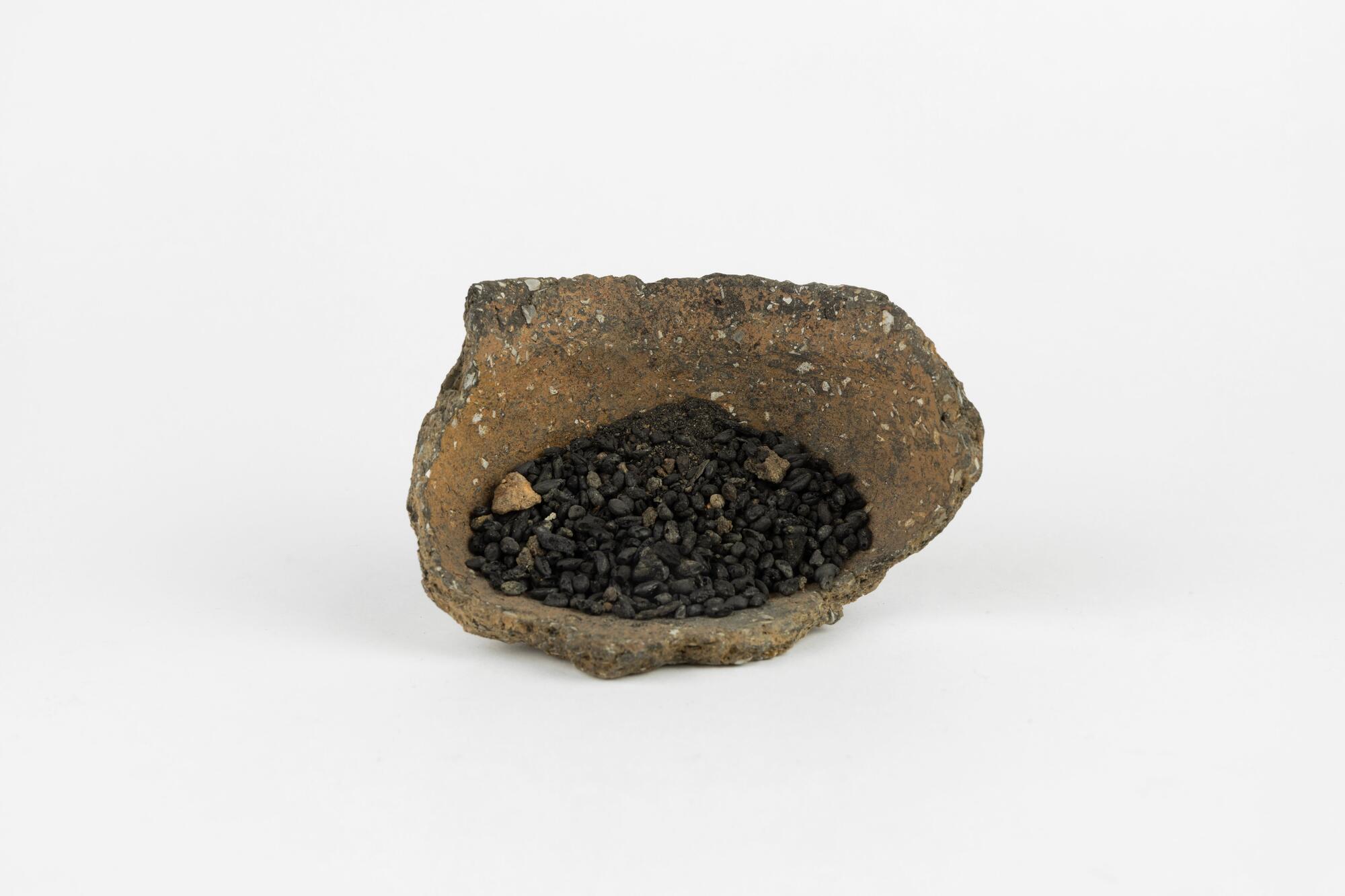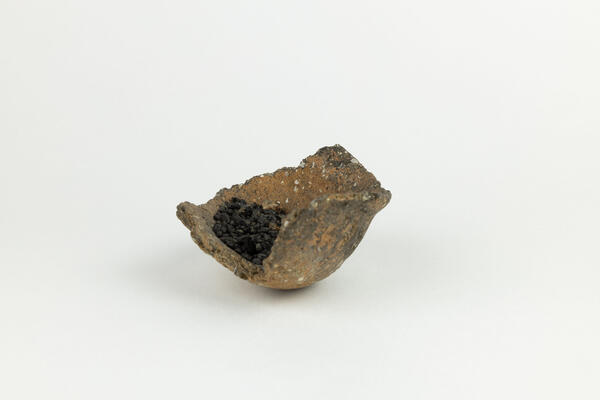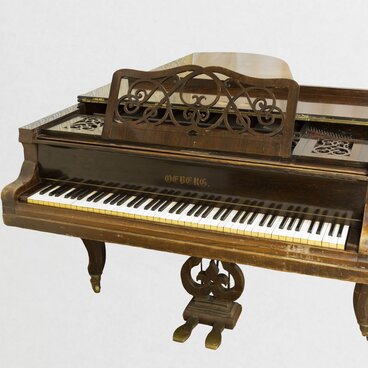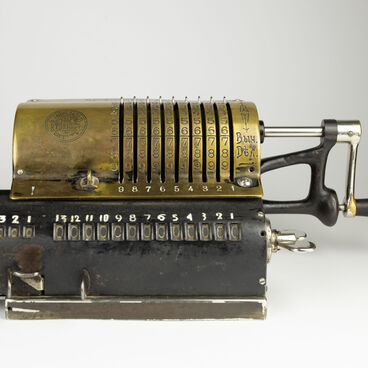A fragment of a clay vessel with grain remains was found in a burnt storeroom during excavations in Dondykar in 1926. The Dondykar settlement that existed in the 9th–13th centuries is now a monument of federal significance and belongs to the Chepetskaya archaeological culture. It is located in the Glazovsky District of Udmurtia, one kilometer from the village of Dondykar.
During the excavations at the Dondykar settlement in 1926–1939, the remnants of 19 dwellings, workshops, sheds, and hearths were uncovered, and a collection of artifacts was collected that help study the material and spiritual culture of medieval Udmurts. In the 9th–15th centuries, they practiced one of the most ancient farming methods — slash-and-burn agriculture: people cut down trees and burned an area of the forest, and then sowed grain into the soil with ash on top, which served as a natural fertilizer.
In the utility pits and on the floor of the houses in the Dondykar settlement, archaeologists found burnt grains, including spelt, spring rye and oats. Wheat, barley, turnip seeds and peas are less common finds. Medieval Udmurts did not grow winter rye. In terms of technical crops, they cultivated flax and hemp for homespun clothing.
Medieval Udmurts ground grain into groats using manual millstones made of coarse-grained sandstone slabs. The harvested crop was stored in grain pits. According to one hypothesis, the grain presented in the museum was charred, but not completely incinerated, and because of that was preserved for hundreds of years. According to another version, the burnt grain is the result of its “self-heating”: when it darkens due to a natural increase in ambient temperature, the grain mass loses flowability and turns into a monolithic material. At the same time, the grain completely loses its qualities and becomes unusable: it is impossible to sow it or to make bread.
Most of the dishes found during the excavations are wheel-thrown pottery, made in the technique of band building. Only 1% of ceramic tableware, including the fragment presented in the exhibition, was made on a potter’s wheel and fired in a furnace. This is noticeable by the shape and the thickness of the walls. Usually, vessels made using this method were brought from Volga Bulgaria.
During the excavations at the Dondykar settlement in 1926–1939, the remnants of 19 dwellings, workshops, sheds, and hearths were uncovered, and a collection of artifacts was collected that help study the material and spiritual culture of medieval Udmurts. In the 9th–15th centuries, they practiced one of the most ancient farming methods — slash-and-burn agriculture: people cut down trees and burned an area of the forest, and then sowed grain into the soil with ash on top, which served as a natural fertilizer.
In the utility pits and on the floor of the houses in the Dondykar settlement, archaeologists found burnt grains, including spelt, spring rye and oats. Wheat, barley, turnip seeds and peas are less common finds. Medieval Udmurts did not grow winter rye. In terms of technical crops, they cultivated flax and hemp for homespun clothing.
Medieval Udmurts ground grain into groats using manual millstones made of coarse-grained sandstone slabs. The harvested crop was stored in grain pits. According to one hypothesis, the grain presented in the museum was charred, but not completely incinerated, and because of that was preserved for hundreds of years. According to another version, the burnt grain is the result of its “self-heating”: when it darkens due to a natural increase in ambient temperature, the grain mass loses flowability and turns into a monolithic material. At the same time, the grain completely loses its qualities and becomes unusable: it is impossible to sow it or to make bread.
Most of the dishes found during the excavations are wheel-thrown pottery, made in the technique of band building. Only 1% of ceramic tableware, including the fragment presented in the exhibition, was made on a potter’s wheel and fired in a furnace. This is noticeable by the shape and the thickness of the walls. Usually, vessels made using this method were brought from Volga Bulgaria.






